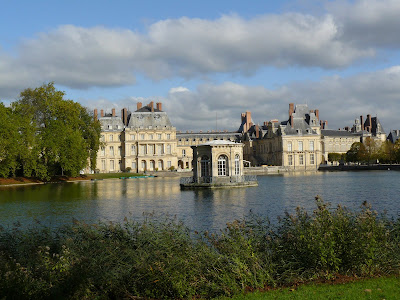A World without Bees presents a powerful and alarming account of current threats to the Western Honey Bee and draws attention to just how serious it would be if bees were to die out. We learn that a third of the average diet (presumably in the west) has been pollinated by honey bees, and other crops pollinated by honey bees are critically important as animal feeds. The food supply and economic consequences would be plainly catastrophic. So what is the problem and what causes it?
In a nutshell, the problem is sudden and substantial deaths among bees. In the USA for example, about 30% of the 2.4 million bee colonies died in 2007 and 2008. And large numbers of colonies have also mysteriously died in Canada, Europe, Asia and South America.
The term Colony Collapse Disorder (
CCD) has been coined to describe the phenomenon. Its typical features are: colonies die or dwindle despite having plenty of honey stores, the queen is usually still alive, most bees die in the field rather than in the hive, and most cases occur in the spring or autumn when the weather is cool.
However, there are some problems with the notion that
CCD is the right way to encapsulate the problem. Firstly, sudden losses are not a new phenomenon: the authors describe other examples in America and elsewhere going back as far as 1869 and continuing in most decades since, usually being given a new name: May disease, disappearing disease, Isle of Wight disease. Secondly, some authorities and some countries (Including Britain and Australia) don't accept they have
CCD. And thirdly, it seems to be accepted that not all losses are due to
CCD.
So the problem is a little ill-defined. Are the causes any clearer? Alas no. What the book reveals is that there are large number of strongly-held theories and explanations, but no clear consensus. The main ones are as follows:
- Infestations by parasites: especially the varroa mite and the nosema ceranae fungus.
- Viruses: for example Chronic Paralysis Virus and Israeli Acute Paralysis Virus.
- Agricultural pesticides: neonicotinoids, especially one marketed by Bayer under the name Gaucho.
- Genetically modified crops, especially sweetcorn, which produce a pesticides.
- Mobile phone transmitters which are alleged to interfere with bees' homing instincts. (Ironically, this seems to be the one theory which has entered popular folklore and yet for which there is no scientific support.)
- Poor bee-keeping practices by bee-keepers e.g. over-use of pesticides designed to eliminate parasites.
- Monocultural farming which depletes the bees' diet.
- The weather: several specific episodes have been blamed on unseasonal weather.
Additionally, the authors emphasise what they call the industrialisation of pollination. In the USA there are about 2.4m hives and most of these are operated commercially. This means that they are moved around the country by truck to pollinate crops at specified times of the year. The most staggering example is the
Californian almond crop. There are 60m trees producing 80% of the world's almonds and they require 1.2m hives for their annual pollination. Yes, half of all bee hives in America are trucked into a 600,000 acre area of California for the purpose. Maybe, the stress of being trucked around reduces bees' immunity to the diseases and pests they are assaulted by.
Secondly, commercial use of bees has driven selective breeding in favour of sub-species which are gentle (i.e. less likely to sting) and good honey-producers. Maybe the price is reduced resistance.
What the book also makes clear is that pet theories abound, that scientists (who tend to favour virus theories) and bee-keepers (who are more likely to focus on environmental threats) see things differently, and that economic interests are also a factor (including those of the
agro-chemicals industry). It is also clear that some strongly-held theories fail basic logical tests: bee disappearances have occurred for example in locations where
neonicotinoid pesticides have not been used.
So what are we to think? The authors come to no clear conclusion, although they note at the end of the book that the scientists generally think the cause is viral, with other factors increasing bees' susceptibility. They also refer to "the noose tightening around the pesticide companies", which suggests that they see this as a critical factor.
Overall, this a very stimulating book, which marshals a vast range of evidence in a very readable way. There are some problems with the structure which combines a sequential approach to the story with thematic chapters on possible causes, resulting in some repetition. I was never entirely convinced that the core problem was entirely nailed: are losses of entire colonies the same as reductions in the number of bees in a colony?
And perhaps, finally, the book is too apocalyptic in tone - the argument is not really made for a world
without bees. There are for example other types of honey bee, who do not appear to be subject to
CCD: the Eastern Honey Bee and the African Honey Bee. The latter are unpopular in America because they are more "defensive" (i.e more likely to sting) - and more likely to incur lawsuits! There are also many other varieties of bee. However, this book was obviously intended as a wake-up call, and in that I am sure it has succeeded.
A world without bees by Alison Benjamin and Brian McCullum, Guardian Books, 2009




















































